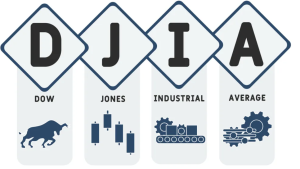Exchange-Traded Funds (ETFs) have become a popular choice for investors seeking a blend of stability and growth. Among the various ETF categories, dividend ETFs stand out as an attractive option for those looking to generate a steady income stream while benefiting from the potential growth of their investments. In this article, we’ll delve into the world of dividend ETFs, explore their advantages, and highlight some of the best options to consider for your investment portfolio.
Understanding Dividend ETFs
Dividend ETFs are a type of exchange-traded fund that primarily holds a diversified portfolio of dividend-paying stocks. These ETFs are designed to provide investors with a convenient way to access a broad range of dividend-yielding assets, offering benefits that include:
**1. Diversification: Dividend ETFs often include a mix of dividend-paying stocks from various sectors and industries. This diversification helps spread risk and enhances portfolio stability.
**2. Regular Income: These ETFs distribute dividends to investors periodically, typically on a quarterly basis. This regular income stream can be an attractive feature for income-oriented investors.
**3. Growth Potential: While dividend ETFs focus on income generation, they can also provide potential for capital appreciation as the stock prices of the underlying assets increase.
**4. Professional Management: Dividend ETFs are managed by experienced professionals who select and manage the underlying assets to optimize income generation and growth.
**5. Liquidity: ETFs are traded on stock exchanges, providing investors with the flexibility to buy and sell shares throughout the trading day.
Advantages of Dividend ETFs
Investing in dividend ETFs offers several advantages:
**1. Steady Income: Dividend ETFs can provide a regular income stream, making them suitable for retirees or those seeking passive income.
**2. Lower Risk: The diversification within these ETFs reduces the risk associated with holding individual stocks.
**3. Simplicity: Investors can access a diversified portfolio without the need to select and manage individual stocks.
**4. Transparency: ETFs disclose their holdings regularly, allowing investors to know the assets in their portfolio.
**5. Liquidity: Dividend ETFs can be bought and sold like individual stocks, offering high liquidity.
Best Dividend ETFs to Consider
While the selection of dividend ETFs depends on individual investment goals and risk tolerance, here are some top options to consider:
**1. iShares Select Dividend ETF (DVY): This ETF tracks the Dow Jones U.S. Select Dividend Index and focuses on high-quality, dividend-paying U.S. stocks. It is known for its consistency in paying dividends.
**2. Vanguard Dividend Appreciation ETF (VIG): VIG follows the Nasdaq U.S. Dividend Achievers Select Index, emphasizing companies with a history of consistent dividend growth.
**3. Schwab U.S. Dividend Equity ETF (SCHD): This ETF seeks to track the Dow Jones U.S. Dividend 100 Index, comprising large-cap U.S. stocks with a record of strong dividends.
**4. iShares High Dividend ETF (HDV): HDV targets U.S. companies with above-average dividend yields and provides an attractive income stream.
**5. SPDR S&P Dividend ETF (SDY): SDY tracks the S&P High Yield Dividend Aristocrats Index, focusing on companies that have increased their dividends for at least 20 consecutive years.
**6. Invesco QQQ Trust (QQQ): While not exclusively a dividend ETF, QQQ tracks the Nasdaq-100 Index and includes many technology giants that pay dividends. It offers the potential for both growth and income.
**7. Vanguard Real Estate ETF (VNQ): VNQ specializes in real estate investment trusts (REITs) and provides exposure to the real estate sector, known for its consistent dividend payouts.
Investor Strategies for Dividend ETFs
To maximize the potential of dividend ETFs, consider the following strategies:
**1. Diversify: Choose a combination of dividend ETFs with varying strategies, such as high yield, dividend growth, or sector-specific, to achieve diversification.
**2. Reinvestment: Consider reinvesting dividends to harness the power of compounding, which can significantly increase the value of your investments over time.
**3. Research and Due Diligence: Examine the underlying assets and historical performance of the ETFs you’re considering. Evaluate expense ratios and dividend yields.
**4. Regular Monitoring: Keep an eye on your dividend ETFs and review your portfolio’s performance regularly.
**5. Long-Term Perspective: Dividend ETFs are best suited for a long-term investment horizon. Avoid making short-term, reactionary decisions based on market fluctuations.
Dividend ETFs provide an excellent avenue for investors seeking a balance of income and growth. By selecting the best dividend ETFs that align with your investment goals and risk tolerance, you can create a diversified portfolio that generates regular income and has the potential for capital appreciation. These ETFs are a valuable addition to any investment portfolio, especially for those focused on building wealth steadily over time.


























